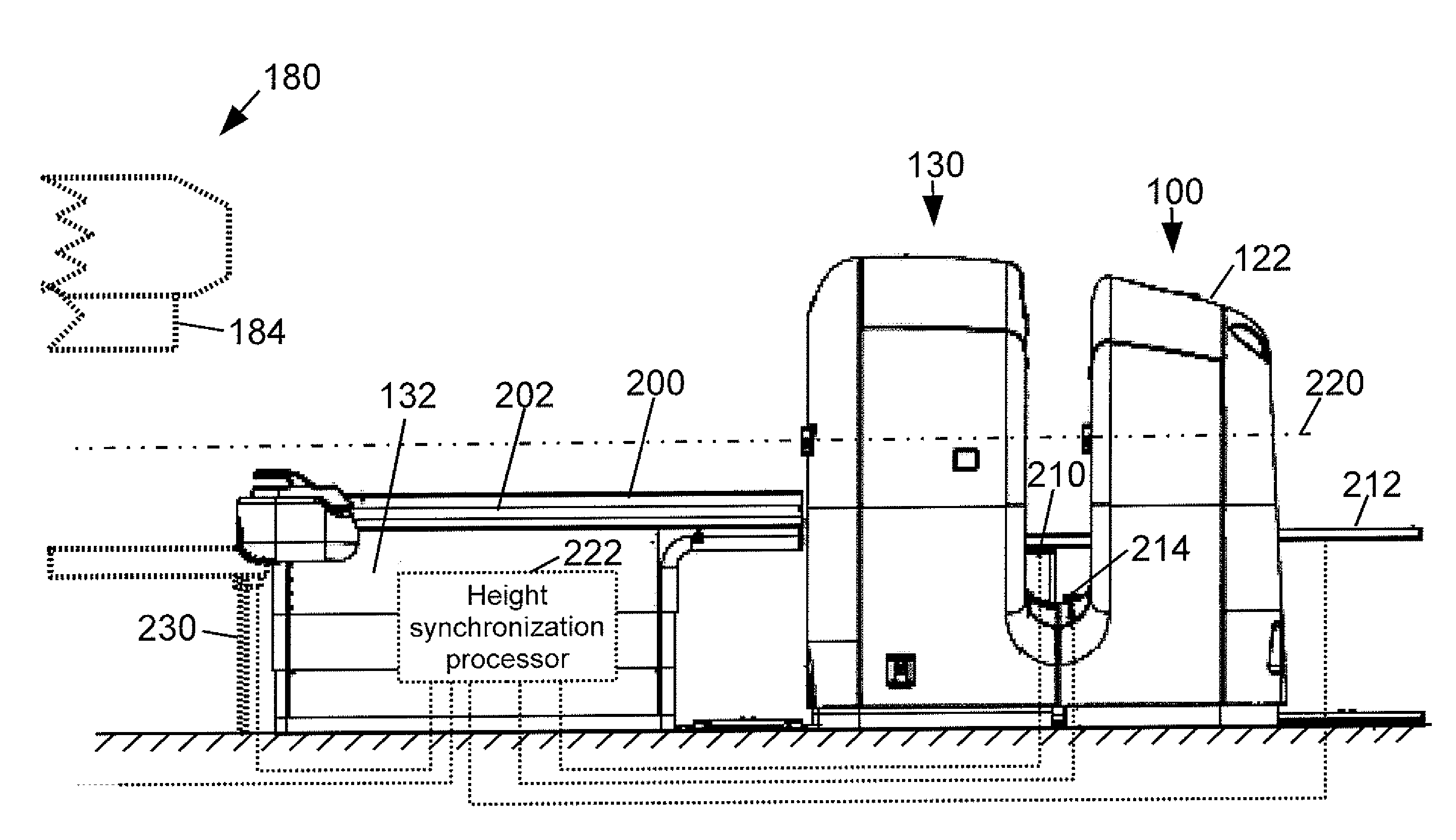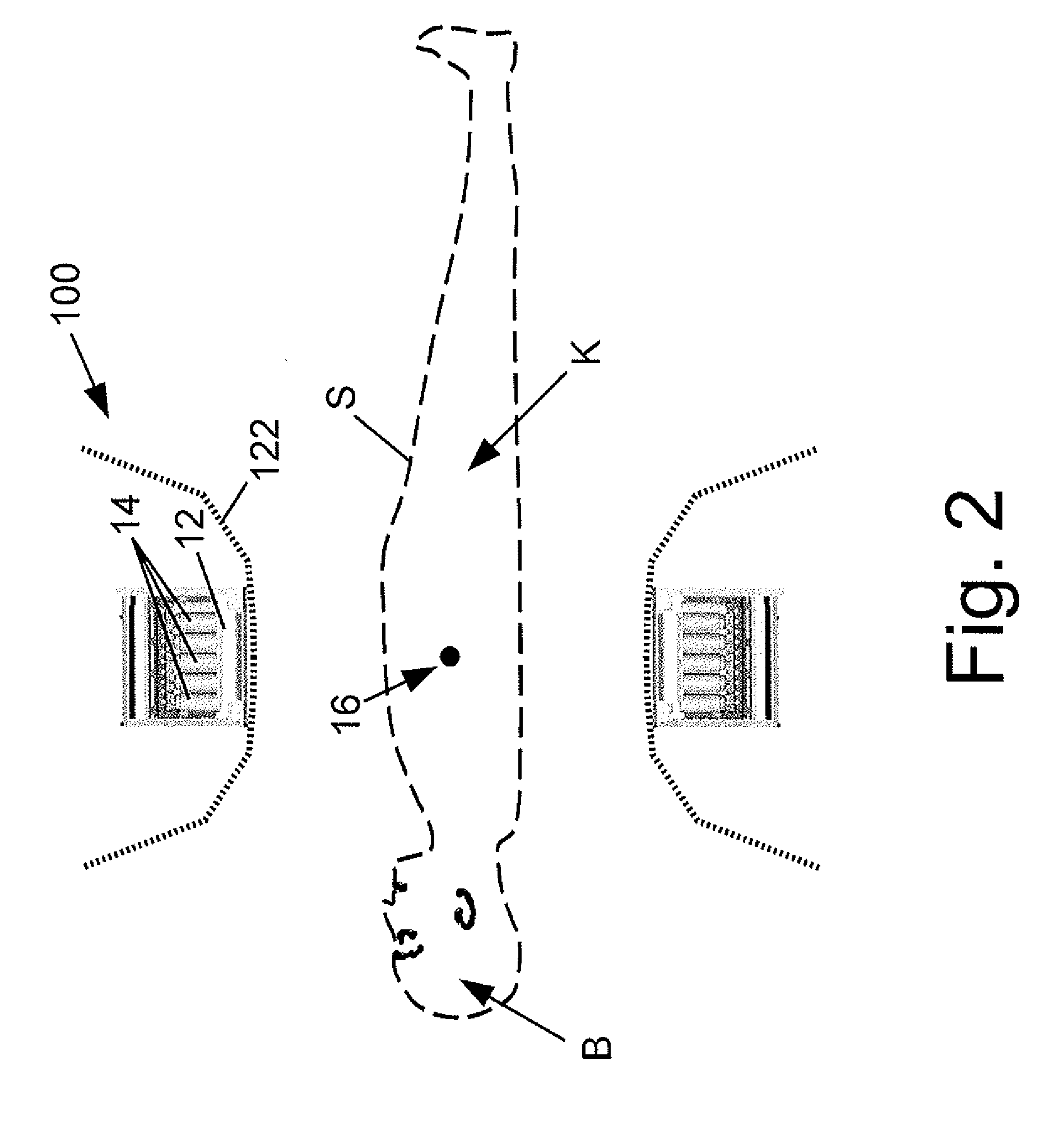Large bore pet and hybrid pet/ct scanners and radiation therapy planning using same
a technology of ct scanner and large bore pet, which is applied in the field of large bore pet scanner and hybrid pet/ct scanner, can solve the problems of affecting the health of the patient, the inability to accurately replicate the anatomical configuration during therapy, and the inability to achieve the combination of large patient aperture and high sensitivity, so as to reduce the radially inward extent, the effect of fast response speed and reduced radially inward exten
- Summary
- Abstract
- Description
- Claims
- Application Information
AI Technical Summary
Benefits of technology
Problems solved by technology
Method used
Image
Examples
Embodiment Construction
[0028]With reference to FIG. 2, a detector ring 100 is similar to the detector ring 10 of FIG. 1. The detector ring 100 includes the scintillator ring 12 viewed by photomultiplier tube (PMT) detectors 14. The patient S is arranged with a tumor or other malignancy of interest positioned at the isocenter 16 of the detector ring 100. However, the detector ring 100 omits the side shield rings 20 of the PET scanner of FIG. 1. As a result, a modified PET housing 122 has a larger patient aperture than the housing 22 of the conventional detector ring 10 of FIG. 1. For example, the scintillator ring 12 of the Gemini™ Time-of-Flight PET / CT scanner (available from Koninklijke Philips Electronics N.V., Eindhoven, the Netherlands) has a detector diameter of 89 cm defined by the scintillator ring 12. However, in the Gemini™ PET scanner, the shield rings 20 extend radially about 10 centimeters inward, so that the shield rings 20 have an inner diameter of 70 cm. As a result, the exterior housing 22...
PUM
 Login to View More
Login to View More Abstract
Description
Claims
Application Information
 Login to View More
Login to View More - R&D
- Intellectual Property
- Life Sciences
- Materials
- Tech Scout
- Unparalleled Data Quality
- Higher Quality Content
- 60% Fewer Hallucinations
Browse by: Latest US Patents, China's latest patents, Technical Efficacy Thesaurus, Application Domain, Technology Topic, Popular Technical Reports.
© 2025 PatSnap. All rights reserved.Legal|Privacy policy|Modern Slavery Act Transparency Statement|Sitemap|About US| Contact US: help@patsnap.com



